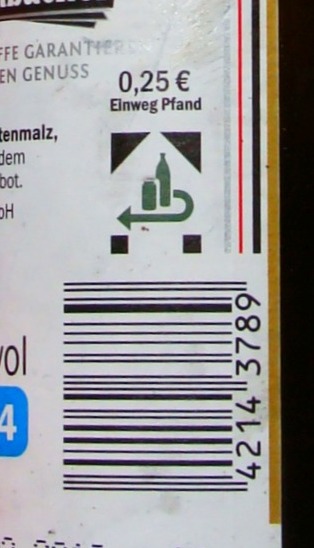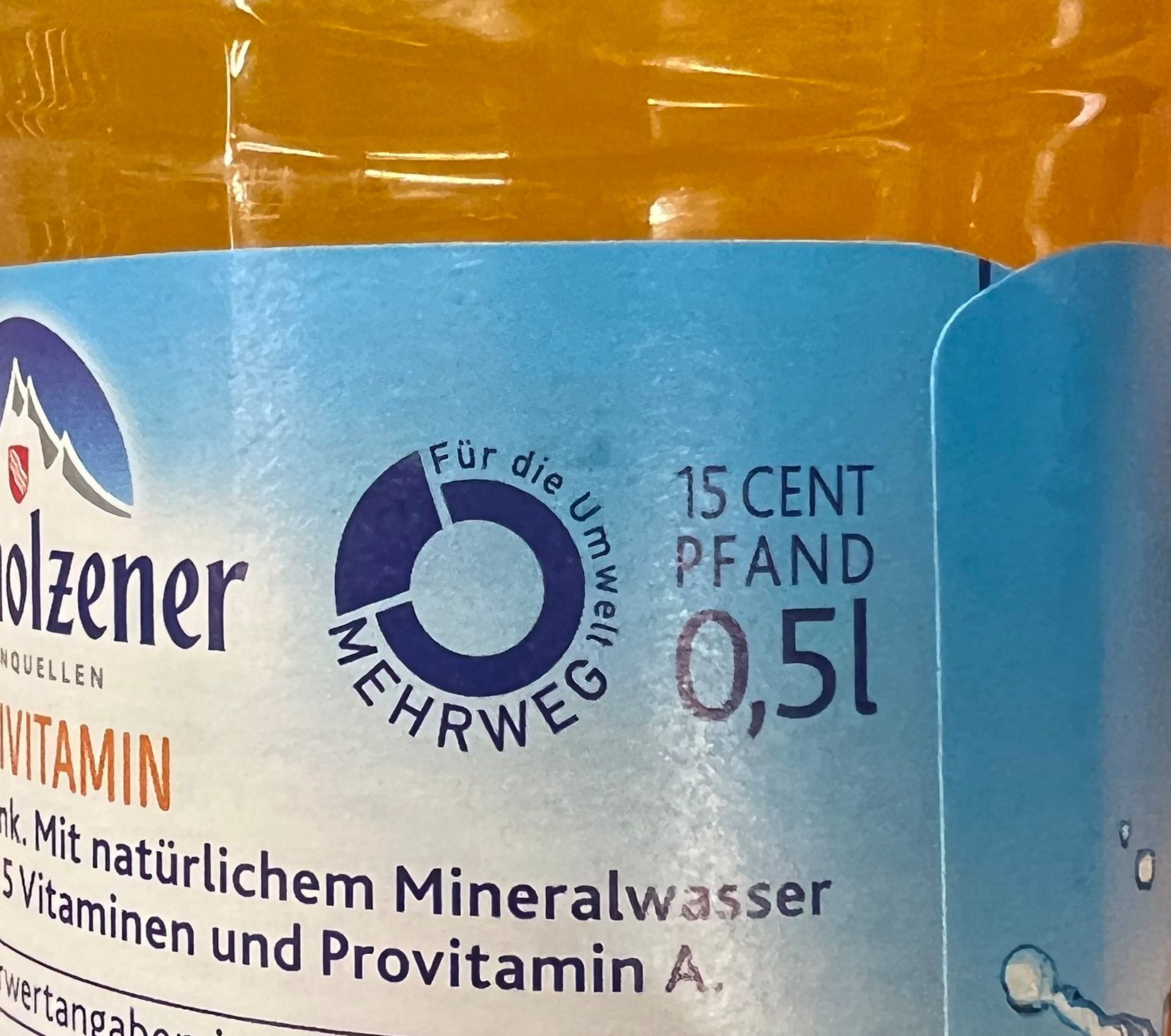The German Deposit System
To reduce packaging waste, Germany has put in place a deposit (Pfand) system for some beverages.
In 2023 and 2024, this system will be extended to even more products.
Let’s review how the system works within the waste management lifecycle, and what the expansion will bring.
1. The 6 R’s of Waste Management
In waste management, it is common to cite the “6 R’s” (archive) as a reminder of the order in which waste should be handled:
-
REFUSE to buy products that are more wasteful / with more packaging;
-
REDUCE the number of products you buy;
-
REUSE items for a different purpose at the end of their life;
-
RECYCLE items you cannot reuse, so that they can help make new products;
-
RECOVER energy from items that cannot be recycled (by burning them for example);
-
ROT (aka send to landfill) only if you cannot do otherwise.
2. The Deposit System
Beverages are not something you can completely "refuse"; you must focus on the "reduce" and "reuse" category.
The deposit system aims at nudging consumers and producers to reuse bottles thanks to a 2-level tax:
-
A one-time-use deposit (Einwegpfand) of 25 cents for any non-reusable bottle;
-
OR A multi-use deposit (Mehrwegpfand) that varies between 8 and 25 cents, decided by the producer.
The one-time-use deposit is never returned to the customer. The multi-use one is partially returned to the customer. The rest funds the producer for the extra handling required. This makes a multi-use bottle cheaper than a one-time use one.
3. Multi-use Deposit
The multi-use deposit currently applies to:
-
Non-alcoholic glass bottles;
-
Beer bottles;
-
Thicker plastic soft drink bottles;
-
Yogurt glasses.
In practice, this means that you can bring back the bottles you’ve bought to the same shop (given that you’ve rinsed them with water beforehand) and put them into a machine that gives you a coupon that you can use at the cashier.
The producer keeps part of the deposit to cover the cost of reusing the bottles.

4. Single-use Deposit
The single-use deposit currently applies to:
-
Less stable plastic bottles (aka thinner ones);
-
Cans.
The government collects the full deposit.

5. No Deposit Products
Some products are exempt of deposit:
-
Wine bottles;
-
Spirit bottles;
-
Bottles from other countries;
-
Milk and juice containers (Tetra-Pack).

6. Impact on the customers, and producers
98% of customers return the multi-use bottles, helped by feeling good about it, and by the small refund.
In big cities, the homeless are incentivized to bring back the bottles they find on the street, so they can cash-in the deposit. Some people even form networks (Pfandsammler) to more effectively collect leftover bottles.
The producers use the deposit money to fund a network to collect the returned bottles for reuse.
Over time, this has led many producers to cooperate with each other by using the same model of bottle, but with a different label. The glue used on those label is also easier to remove. Doing so limits the need to sort bottles per producer, and reduces costs by eliminating unnecessary transport.
Before getting recycled, glass bottles are reused up to 50 times, while plastic bottles are reused up to 25 times.
Even if the single-use deposit appears more expensive for customers, producers have no need to spend money on collecting, cleaning and refilling bottles.
Furthermore, the surge in raw material prices over the last few years may give an unexpected incentive. If you can sell more raw materials, you can make more money. Some producers now produce more single-use bottles, and push customers to return those bottles. They can then sell it back as raw material, potentially saving more money than having to reuse those bottles in the first place.
7. Short term future
Germany has passed a law requiring restaurants, snack bars and cafes to offer reusable takeaway alternatives to disposable packaging (such as bringing your own box in take-away restaurants, or your own cup at a café, etc.).
Exceptions exist for companies of fewer than 5 employees.
The deposit system expands to apply to all single-use plastic bottles and cans, as well as milk products.
Finally, bottles made of PET plastic are now required to use a minimum proportion of recycled PET.
8. Long term future
Some discussion are on going at organizations such as NABU (archive) about updating the one-time deposit so that it is more efficient, by, for example, fixing the amount according to the type of material used, its impact on the environment, and the quantity used.
9. European Deposit System?
Today, there is no pan-European deposit system in place, but multiple countries are already doing it on their own (archive):
-
Sweden (since 1984);
-
Iceland (since 1989);
-
Finland (since 1996);
-
Norway (since 1999);
-
Denmark (since 2002);
-
Germany (since 2003);
-
Netherlands (since 2005);
-
Estonia (since 2005);
-
Croatia (since 2006);
-
Lithuania (since 2016).
New countries are also putting it in place:
-
Latvia;
-
Belarus;
-
Slovakia;
-
Romania;
-
Portugal;
-
Malta.
10. Conclusion
The German deposit system fits in an upward trend of countries trying to reuse beverages packaging thanks to a tax system to reduce waste due to packaging.
The lack of a pan-European law means that some products are inherently not targeted by those systems (such as imported French wine bottles), and their scope not always overlapping.
Yet, this situation allows each country to experiment, and learn from each other. Ultimately, this could help pave the way to an efficient and homogeneous deposit system across Europe.